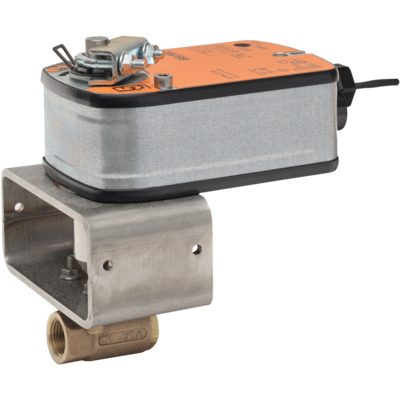A control valve manipulates or regulates the flow of different fluids, such as water, gas, steam, or oil. It is located in the control loop, an essential part of the water softening industry’s final control element.

How does a control valve operate?
To know the function of a control valve in a water softener, you should first understand how it operates. First of all, all control valves come with an actuator attached through the valve stem. The actuator provides the much-need force to move the valve. Now, most actuators that come in water softeners work on electricity. There are two other variants, though: one that works hydraulically and the other pneumatically.
The control valve first receives a signal from its controllers, such as a DCS or PLC, to start working. A controller’s job is to compare the accurate flow rates with the desired flow value, thus offering the water softener’s best setpoint. It will then produce an output that moves the valve until the flow rate matches the setpoint value.
Fleck control valves
These days, most water softeners contain a fleck control valve that can regenerate cycles and backwash for media filters automatically. The advantage of using this type of valve in your water treatment system is it allows the softener to work at its optimal condition all the time. Water softeners may get clogged if the filters accumulate too much iron for months. But with a control valve in place, it will take longer for the filters to get jammed because of its backwashing and regeneration feature.
These valves have a time-clock option that you can set regularly. It keeps track of the regeneration cycles. This isn’t a norm, though. You can set the clock every two or three days, or even every week.
Many water softeners also use fleck control valves with metered options. These offer on-demand regeneration, depending on the volume of water you use. You can look out for some more features, such as interlocking, manual operation, remote start configuration, series, and triggered regeneration.
Fail-safe mode
High-quality water softeners use control valves that have a fail-safe mode. Sometimes control valves fail to locate the specific position of their output when there is signal loss. This is where the fail-safe mode prevents the valve from losing its function. As the valve increases its air pressure supply, the rubber diaphragm inside moves the valve stem by pushing it against the spring. On the other hand, when it reduces the air pressure supply, the spring forces the valve from the diaphragm out of the body.
The type of fail-safe mode that a water softener uses depends on the application of the control valve. The actuator in the valve is responsible for both fail-closing and fail-opening of the softener’s control valve.
Therefore, whenever you decide to buy a water softener, keep these technical things in mind. They would help you pick the best water softener that works flawlessly for years.



